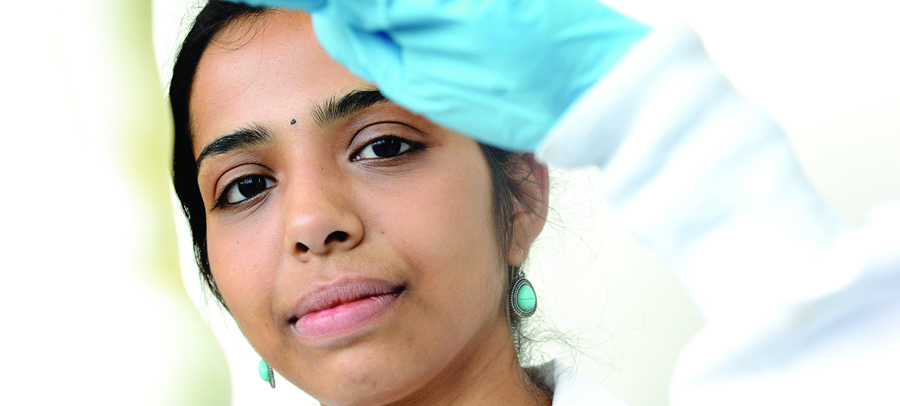
Mirunalini Thirugnanasambandam
BME student sees opportunity to help physicians make critical decisions
Meet Mirunalini Thirugnanasambandam. After receiving her undergraduate degree in mechanical engineering at College of Engineering, Anna University, India, and her master's degree in mechanical engineering from McGill University in Montreal, Canada, Thirugnanasambandam decided to continue her education in the UTSA and UTHSCSA joint graduate program in biomedical engineering.
“Initially, my interest in [College of Engineering professor] Dr. Ender Finol's research on aneurysms drew me to UTSA, but then the numerous avenues for collaborative research and infrastructure available here helped me make my decision,” she said. “The joint graduate program in biomedical engineering between UTSA and UTHSCSA was particularly attractive to me since it provided me the opportunity and resources to understand and resolve clinical problems from the perspective of a physician and an engineer.”
And now, in her fourth year, Thirugnanasambandam has been awarded a $50,000 Predoctoral Fellowship by the American Heart Association (AHA) to study abdominal aortic aneurysms (AAAs). She decided to study AAAs because she was looking for avenues in research where she could apply her knowledge as a mechanical engineer to real-world problems and find solutions that were relevant in more than just statistics and numbers.
“In studying AAAs, I saw the opportunity to help physicians make critical decisions about operating on patients affected by aneurysms,” she said. “The most interesting part of my research on AAAs is that we use clinical images to derive so much valuable information in terms of biomechanical and geometric indices of a patient's own AAA.”
After looking at the clinical images, Thirugnanasambandam says that she and Finol reconstruct the actual aneurysm geometry from CT or MR images and run physiologically relevant simulations on them to identify the regions of high wall stress. This information can be used as an effective prognostic tool for classifying AAAs based on rupture risk, save patients from unnecessary surgeries, or help diagnose a life threatening AAA before it takes a patient's life.
After beginning her research in summer 2015, Thirugnanasambandam headed to Europe this past fall to work with Dr. Stephane Avril, a biomechanics researcher and professor at Mines Saint-Étienne, France. Together, they worked to develop a code that will help evaluate AAA wall strains without having to run computationally expensive simulations.
“Getting the AHA fellowship is a big boost for me since I believe that it will lay a good foundation for my career,” said Thirugnanasambandam. “It will also be an effective first step toward achieving my career goal, which is to be an academician who can answer a lot of important research questions and be a wonderful teacher just like my parents and my mentors.”
– Story and photos by Deborah Silliman/College of Engineering

